The night sky is an astounding phenomenon that fascinates almost every individual. Stars have been around for thousands of years and yet, humankind is still mesmerized by their beauty. Despite the distance, we have such a strong connection and love for these great unknown entities. Capturing the magnificence of the night sky is highly rewarding and can be an exciting process as well.
Michael Shainblum, an astrophotographer, says, “Photographing the stars doesn't really require as much fancy gear as people would think. It doesn't require a telescope or extremely fancy camera. All you need is a consumer grade DSLR and a pretty fast wide lens. It really comes down to you planning as an artist and doing the preparation for the shot." The key to photographing stars is planning.
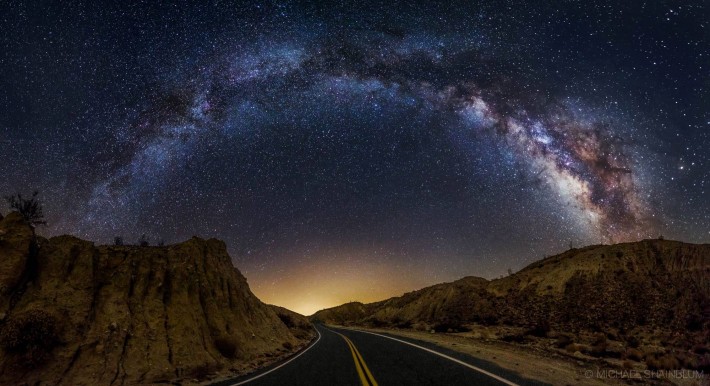
20mm - 20 secs - f/2.5- ISO 4000
INTERVALOMETER
An external intervalometer remote is highly recommended for landscape photography in general, however, when shooting stars it makes the greatest difference. The advanced intervalometer (Canon Nikon) options will make life easier when shooting. Most importantly, it will reduce camera shake.
TRIPOD
Any decent tripod will do. However, it is recommended to take time to research tripods until one of decent quality is found. Personally, I found myself buying a new tripod every year until I learned my lesson and invested in a solid tripod that can withstand the environments it is placed in.
TIME
The best time to shoot the stars is highly dependent on the moon phase and the time of year.
If looking to shoot the Milky Way, shooting mid-summer (from May to July), when the galactic core is traveling through the dark sky above the horizon is optimal. For shooting general star trails, the optimal time is highly reliant on the time of year. In February, shooting at 4 AM is when the stars will be brightest and in September or October, shooting right after sunset will ensure the stars presence in the image.
Moon phases have the power to disturb your image. Moonlight has the ability to wash out night sky images. If the moon is in any way brighter that the crescent, the colors of the Milky Way will be almost non-existent.
Thankfully, there are apps out there that can assist an astrophotographer in finding sunrise/sunset times, moon phases and the best dates to take photographs of the stars. Starwalk is an app that allows you to plan out the shoot so you know exactly what to expect. The app allows you to see the direction where the sun and moon will rise and set and the Milky Way’s general location.
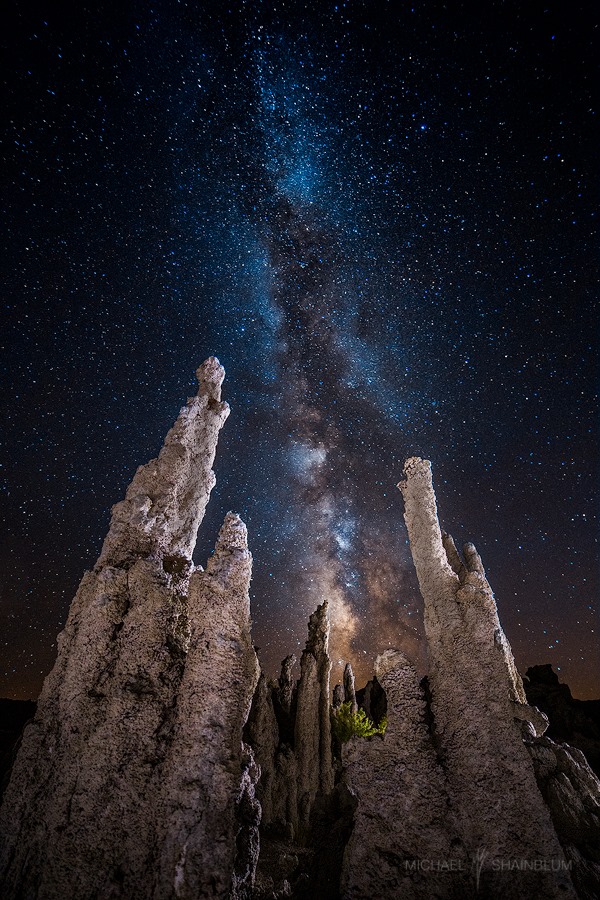
30 secs - ISO 3200
SCOUTING
Brad Goldpaint discusses his scouting procedure for the prime location to shoot stars. Depending on the location of the shoot, he suggests beginning the search for a location with Google Earth. He finds that the biggest challenge with capturing the night sky is “finding a location with limited light pollution.” In order to prevent light pollution, it’s important to drive as far away as possible from any city no matter how small the city is. A portion of Goldpaint’s course instruction during his 2014 series of night sky photography workshops, is geared toward educating participants about the damaging effects of light pollution and helping people reconnect “with the beauty of dark skies.”
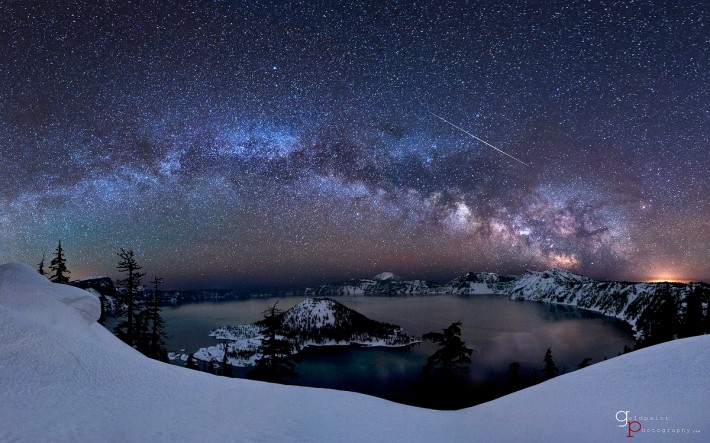
Other significant challenges Goldpaint faced are the weather, moon cycles and the position of the Milky Way. Specifically with the northern hemisphere, the heart of the Milky Way won’t always be visible. During the shoot for his latest image, “In the Dream,” taken in February, the heart of the Milky Way rose from southeast but quickly vanished because of the rising sun. The image was taken during the new moon phase and he was fortunate enough to be in Nevada’s Valley of Fire State Park, which has a clear sky.
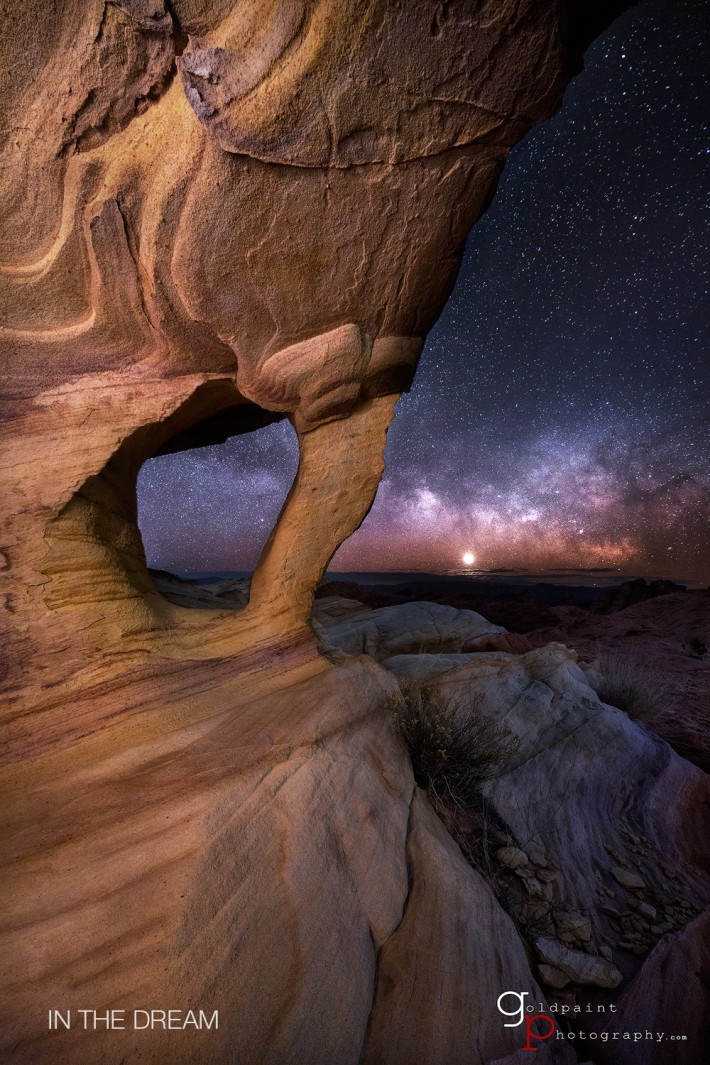
COMPOSITION
Elia Locardi suggests that "while Star trails can be used to dramatically enhance a scene, give careful consideration to the core subject of the photograph to be sure that it would also work without the addition of stars.” Looking at the photo “Time Stands Still,” the star trails add interest to an already captivating scene of Petra by Night. The scene is abundant with depth an emotion.

Depending on the positioning of the composition of the shot and which focal length is used, stars can either swirl around the sky or look like they are falling to earth. Locardi continues to say that “small variations in camera setups can lead to dramatic differences in the final look and feel of a scene.”
A tip Locardi shares is that because star stacking requires capturing a multitude of long exposures, it is important to make sure that the camera setup is secure and it is key to reduce any chance of light leaks. “One compromised shot can potentially ruin the entire sequence” says Locardi. It is important to note that exposure times and amounts are entirely personal. Elia captured 250+ 30 second exposures for his shot “Sleeping Giants.”

f/2.8 -ISO 100 - 250 x 30sec exposures
HOW TO STACK FOR STAR TRAILS
Zach Bright was nice enough to share his processing for Star trails. "A lot of people use an APP called StarStax. I like it, but it's not as flexible as my own method and it doesn't work with 16 bit files." Generally his workflow is as follows:
1. Open files in RAW and make all adjustments. For this stage, try to stick to the side of natural-ness. If you find that the effects are too much after you combine your images, you'll need to start over to change them.
2. Render out all images as 16-bit TIFFs, or just open them all in Photoshop (PS). If your using 20 or less files, either is a reasonable option. If you ever combine hundreds of shots, you'll need to save. PS will crash otherwise.
3. In PS go to file/scripts/load files into stack.
4. Click "Add Open Files" if you already have your images open, or browse and load them if you don't. Don't check auto align or smart object. They should already be aligned, and you don't need smart object unless you're going to average.
5. Press OK, and PS will load all your shots in a single document into separate layers.
6. Select all the layers, and change mode to Lighten. POW! Star trails!
7. You can also play with the opacity of each layers to create comet-like effects. For example starting with the first at 100%, the next 90%, 80%,70% etc.
Here is "Pool of Stars," one of my all time favorites that Zach took in Zion National Park.
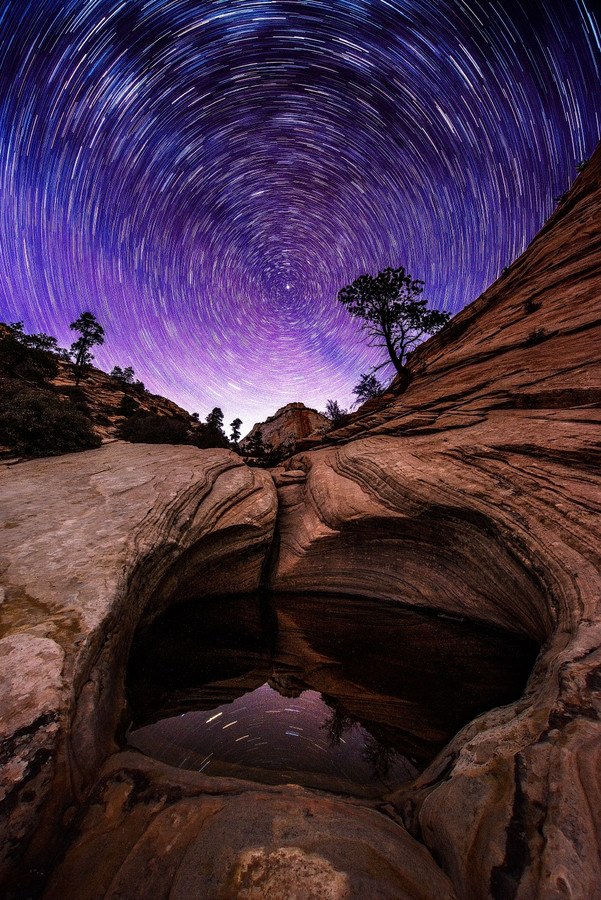
TIPS - Bhuminan Piyathasanan (AKA AtomicZen) shared some interesting tips worth noting. "Focus with live view. I usually focus foreground and stars with live view of a camera. In addition take two or more exposures with different points of focus. Meaning, I will focus for my foreground in the first exposure and the stars for the second. The goal is to extend ‘sharpness’ from foreground to background, the stars."
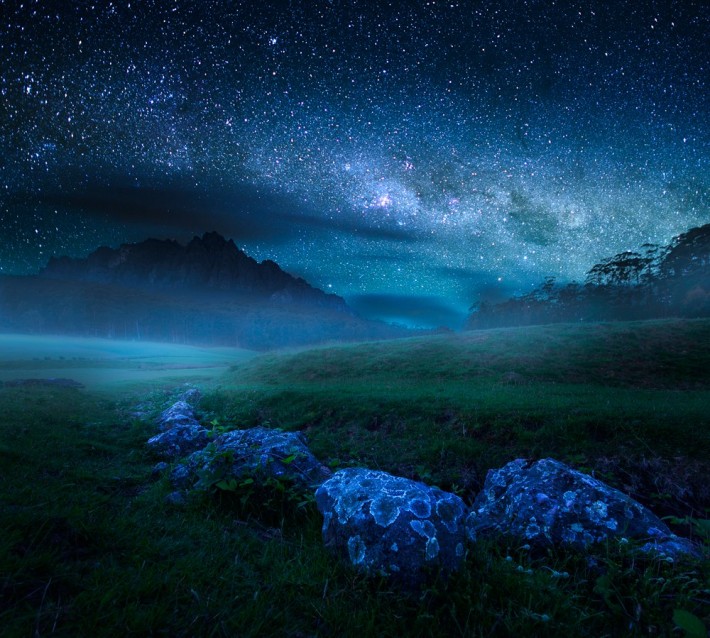
For the Milky Way avoid star trails with the "400 rule." Remember this is for stationary shots not star trails. The rule is as follows - Divide 400 by the focal length of the lens, this should be your shutter speed in seconds. Anything longer and your stars will leave a trail. For example, with 20 mm lens your exposure should be no longer then 20 seconds. (400/20 = 20 sec)
Know your camera’s ISO limitation. With modern camera (e.g., Nikon D800 or Canon 5D Mark III), we can employ a higher ISO. Taking a night photo, I can normally bump it to 3,200 to 6,400 ISO and still walk away with a usable outcome.
12mm - 60X180 secs - f/4.5 ISO 1600 "Turnaround of Stars" Maurizio Pignotti
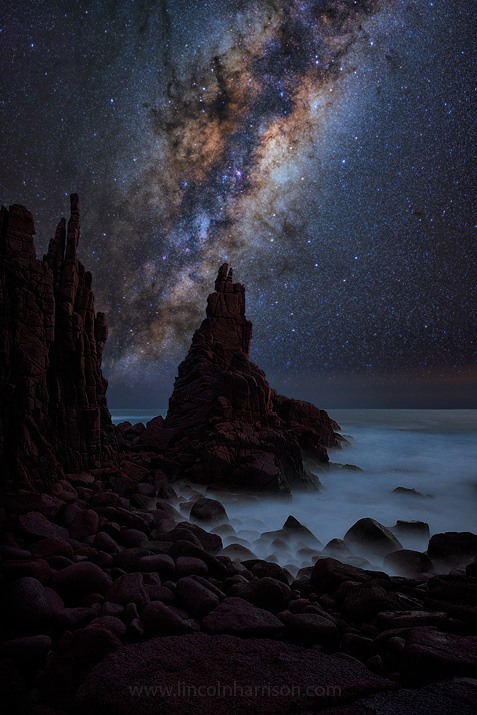
18mm - 30 secs -f/2.8 -ISO 4000 Lincoln Harrison
Going out on a clear night is important but a few clouds can always add an interesting element to your composition. As you can see Jorge Maia used the clouds to his advantage here!
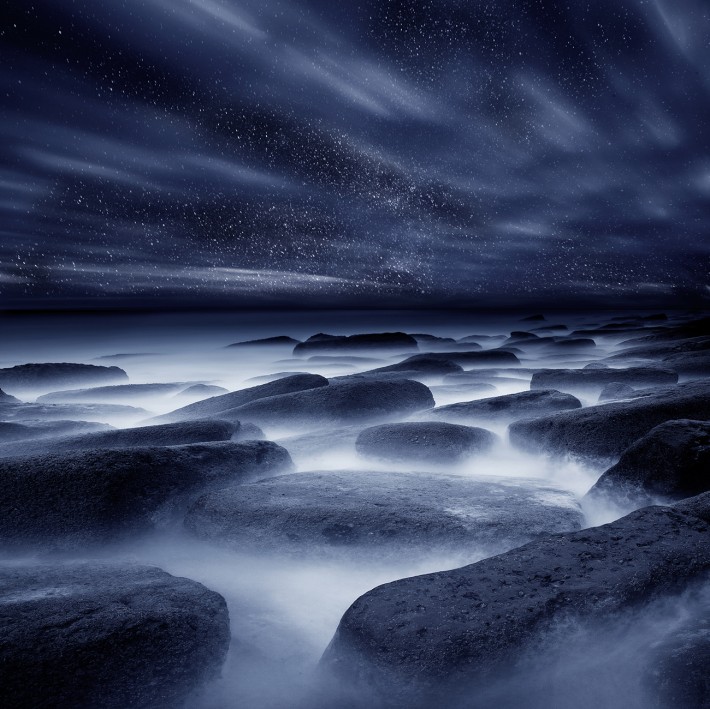
Here is one of my photos "Home Alone" Dani Diamond Photography
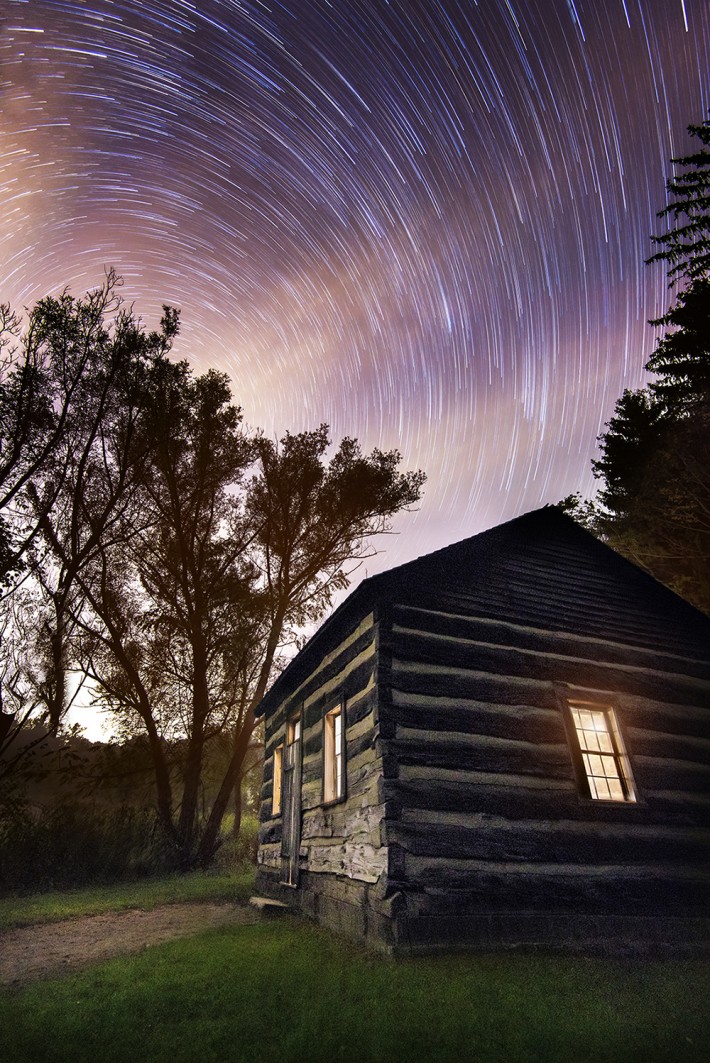








sorry, can't get past it. light years is a unit of distance not time...
The quality of the images in this post are spectacular. I have been to Petra and attended the candle ceremony, Eli's image is beautifully conceived and executed. Thanks for bring these all together in a single post.
Hey Mitch,
Thanks for the compliment! I'll be leading a photo workshop in Jordan later this year to capture some more of Petra under the stars. Definitely looking forward to it! :)
Elia, I was there with Colby and we had a blast. If I could add one more thing, Canon users; here's a guide for setting up your camera for night photography you might find helpful. http://blog.lenstraveler18.com/story/story-story-2/setting-up-your-camer...
I wrote this several years ago and it's been one of the most popular blog posts I've ever written.
Great article Mitch and I'm happy to hear you enjoyed Petra so much!
Excellent article!
You had me at galactic core
Great article Dani! - Dan Carr also shared some tips on how to shoot and edit startrail images. Could be interesting for everybody interested in the subject. - http://prophotocoalition.com/dcarr/story/behind-the-image-racetrack-star...
Great accumulation of artists - However I believe you left one out that should be mentioned - Lincoln Harris - http://www.lincolnharrison.com/startrails/
Thank you, Lincoln's photo and name was mentioned above.
Ha! My bad... now that you say that I went back and noticed it ...
They just didn't include his star trails, which I think are the most spectacular...
Does the 400 rule apply the same for a crop sensor camera?
Rules are meant to be broken in general. That being said since a cropped lens is tighter you shouldn't go by the focal length, rather, go with the equivalent length to a full frame sensor.
For a crop sensor camera the formula would be T= 400/(Focal length X Crop Factor). So for a 20mm lens on a 1.6 crop factor camera -- it would be 400/(20 X 1.6) = 12.5 seconds. It's a rule of thumb, though, so it's a good starting point.
A small tool for people looking into long exposure time estimation: http://blog.alpine-photography.com/2013/06/stars-right-tool-long-exposur...
I will be leading a group out to Dungeness this weekend, so perfectly timed post ;)
Great article! People are always asking me how to photograph the night sky and now I can just point them to this article - great work!
I've set a reminder for 2 days before and after every new moon for over a year. Not once have the conditions been in my favor to shoot the stars. This is why I need to get out of North East Ohio. The clouds here ruin any chance for a good astrophotography.
Not just the clouds but moisture in the area in general I bet. There is a reason some of the best stuff is shot in desert areas. :/
Kudos for your persistence. Wondering if you've manage any in 5 yrs since? :-)
I'm a little surprised you didn't include any of Shane Black's work (http://bit.ly/Oo7coo)
Does anyone have some tips or an idea on how Jorge Maia lighted the foreground in the second last photo ? Its a jaw dropping shot.
"Stars have been around for thousands of years" ????!!!! Try BILLIONS!!!!!!!!!!!!!!!!!!!
I've always been interested in sky photography. I'll have to give it a try. Thank you for the information. Cheers all
Pretty sure that stars have been around for longer than thousands of years...
I have a problem. And I would like your advice. I want to take a wide photo of the night sky. For this,I have a Nikon Coolpix P1000 bridge camera and a good tripod. The first problem with my camera is that it has a very small sensor (1/2.3"). It has an automated program for this kind of photography. But at my first attempt has shown star trails witch I don't desire. I can't easily find a dark place in my city,so I went to the terrace. I went to 24mm focal length and f2.8 on manual mode. At the manual focus with light pollution around me I took a wild guess and simply aimed at the infinity. The thing is that, when I choose ISO1600,in manual mode, the camera does not allow me to go to apperture speed slower than 1"!! If I want to go further to thirty seconds I have to go to ISO100!!! On the other hand, the automated scene goes to 25secs! Should I even bother to try to shoot 20-25 seconds with ISO100,is there any other way to surpass this limitation,or should I stick to the preset scene?